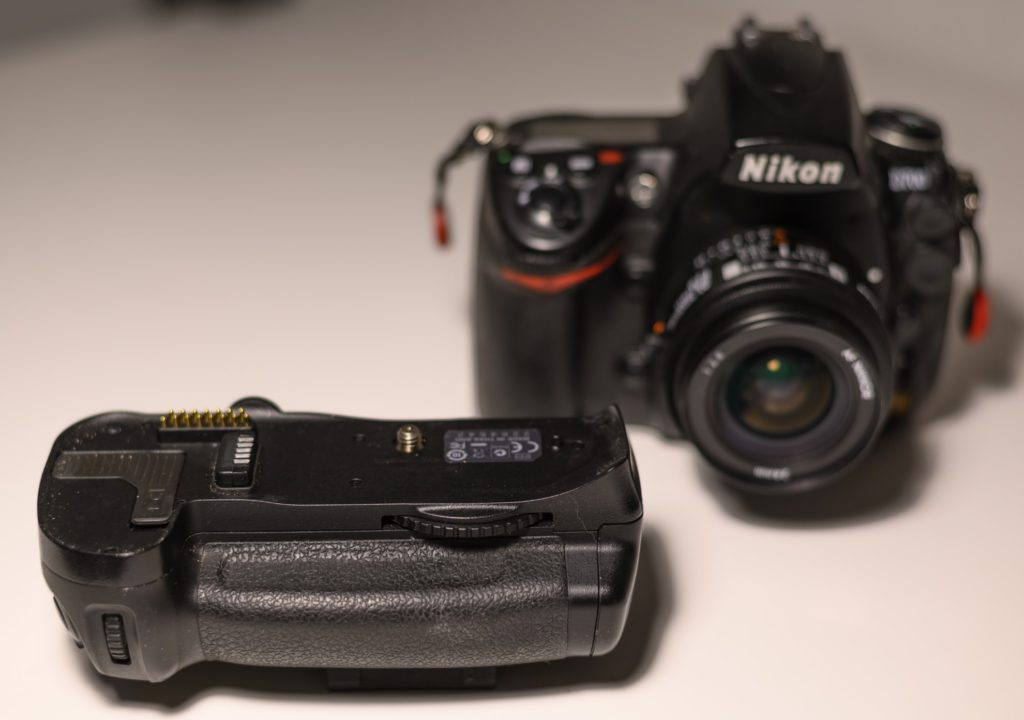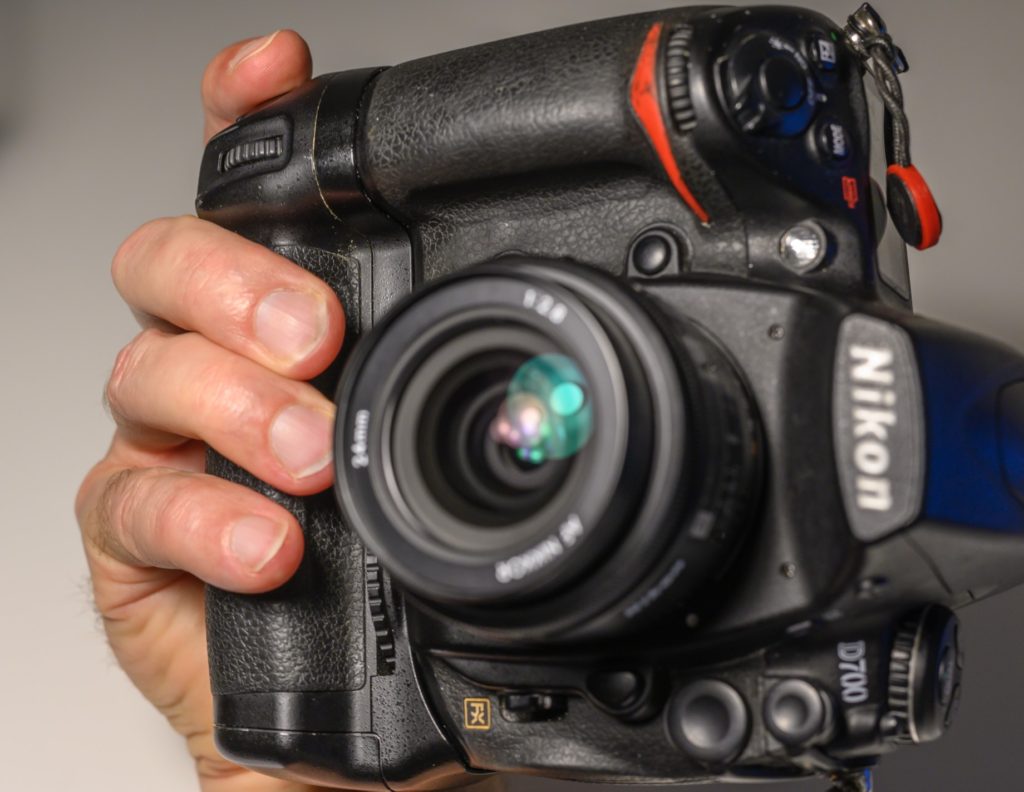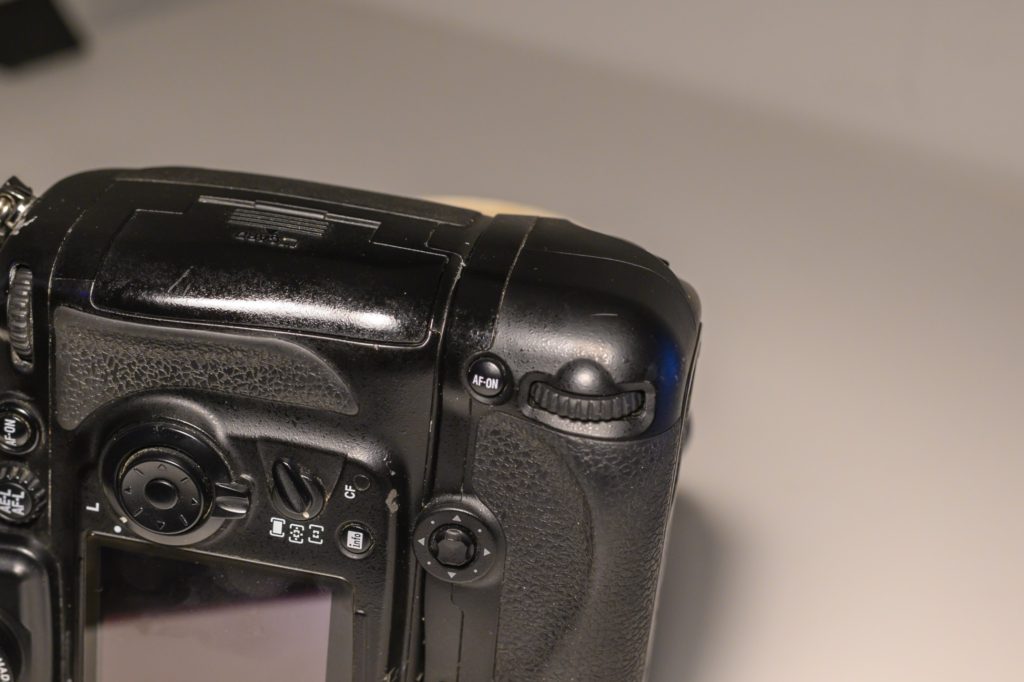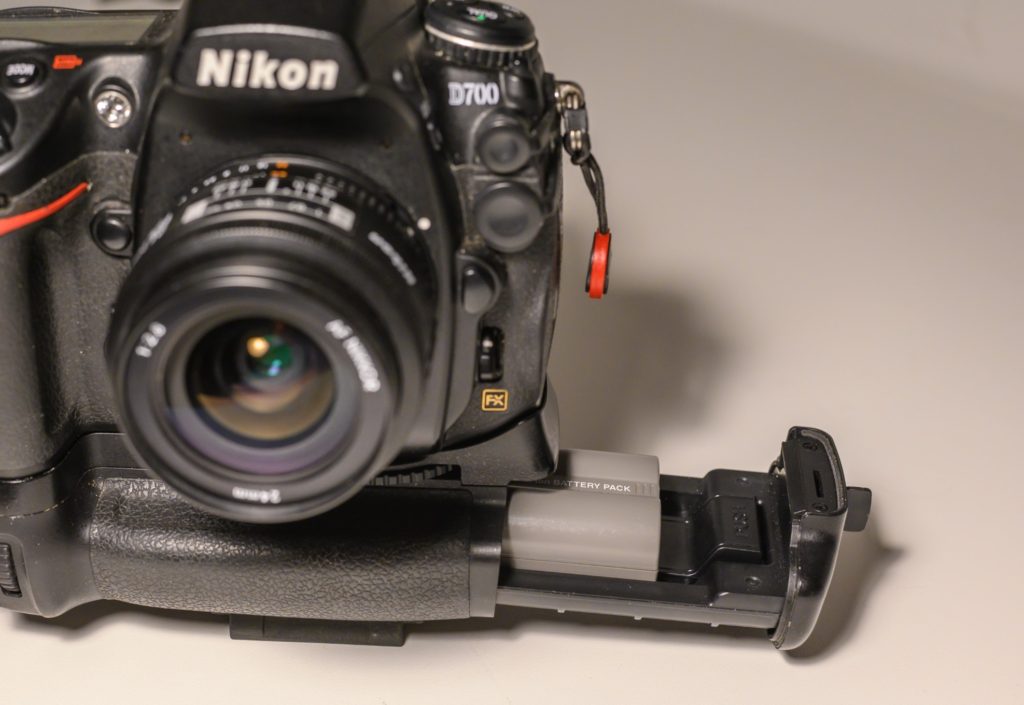A grip on ergonomics
A battery grip is an optional extension of your camera body, that allows you to mount more batteries than what can be in the camera body as such. Some cameras like the Nikon D4 are “born” with the grip as an integral part of the camera, but most cameras has a battery grip as an option.

You can always carry an extra battery in your pocket, but the first advantage of a grip is that it extends the number of “built in” batteries. Some camera grips even allows you to charge the battery while mounted in the camera which further eases the job of leaving home with sufficient battery power.

Another advantage is improved ergonomics. In the image above, you can see that the camera body is extended downwards, and there for gives more real estate for your hands to hold on to. When shooting in landscape mode, especially the pinky on large hands will find much better support and grip than without the grip.

A third advantage is also related to ergonomics. When shooting in portrait mode as many portrait photographers do most of the time, the battery grip provides ergonomics very similar to the grip in landscape mode. You avoid the twist in the wrist, as your hand can stay in the same position while you turn the camera. This may sound like a small thing, but when you are working with heavy cameras and/or for extended periods of time, the relief a grip provides for your wrist is vital.
On battery grips, it is often the case that the shutter release and the most vital controls are replicated. Not all grips have this feature, so make sure to check the one you consider to buy. Lack of controls on the grip reduces the ergonomic benefits somewhat.

In the example above from my Nikon D700, the grip actually has better buttons and dials than the camera body as such, as the command wheel is replaced by a joystick!
A final benefit is the ease of access to the batteries in the grip, when mounted on a tripod:

The battery in the camera body sits vertically, where as the grip holds the battery in a horizontal position. This makes access much easer. A slight disadvantage is though that access to the battery in the camera body can be more cumbersome, as it involves removing the grip first.
The disadvantage of grips is extra cost and extra weight.
A grip can easily make up a significant investment relative to the price of the camera body. There are many off brand producers that make battery grips that price wise are significantly lower than the brand versions. But in my experience, the extra cost of the brand version is more than justified in better quality and feel.
Not everybody likes the added weight. I find on the contrary that the overall balance in the camera body and glass is improved, so I love my grips! But we are into personal preference territory here, and I recommend that you try out a grip before you buy exactly for that reason.
Related reading
Is mirrorless cameras better than DSLRs?
